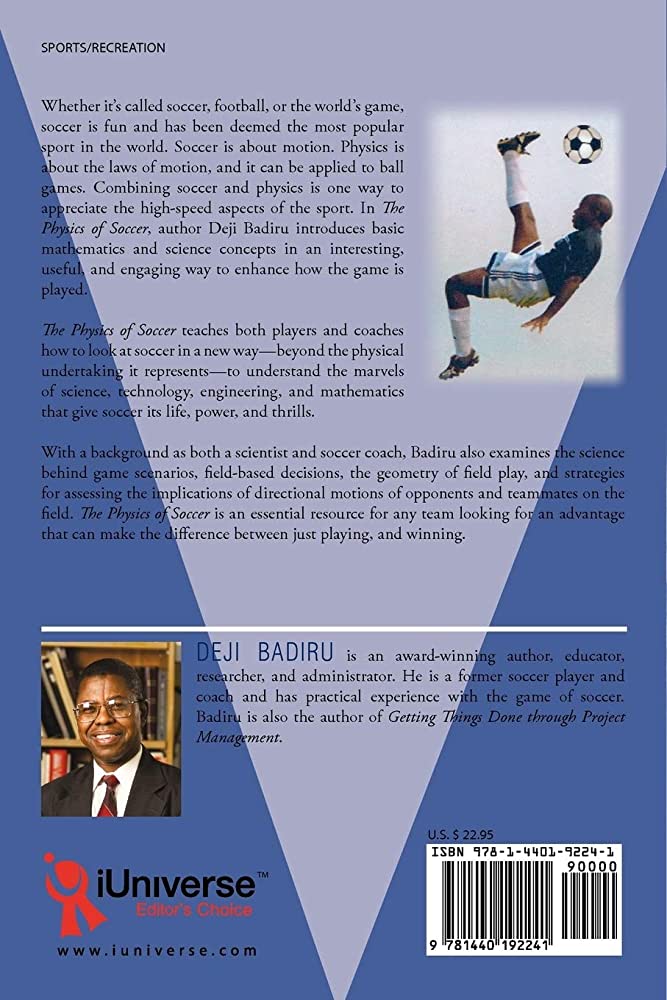Soccer is the most popular sport in the world, but behind the seemingly straightforward game lies a complex web of physics principles that govern every move and action on the field. The soccer ball is a critical component of the game and has a specific set of physical properties, such as its size, mass, and shape, that affect how it moves in the air and on the ground. The trajectory of a soccer ball is determined by its velocity, launch angle, and spin, and the speed of the ball is affected by factors such as the force of the kick, the mass of the ball, and the air resistance it encounters. Advancements in technology have had a significant impact on soccer, including goal-line technology and biomechanical analysis. Understanding the principles of motion, force, and trajectory can give players and coaches an edge in improving their game.
The Physics of Soccer: Understanding the Science Behind the Game
Soccer, also known as football, is the most popular sport in the world. It is played by millions of people, from amateur to professional level. The game is simple: players try to score goals by kicking a ball into the opponent’s net. However, behind this seemingly straightforward game lies a complex web of physics principles that govern every move and action on the field.
The Ball
The soccer ball is a critical component of the game. It’s the object that all players try to control, pass around and eventually shoot to score a goal. The ball has a specific set of physical properties, such as its size, mass, and shape, that affect how it moves in the air and on the ground.
Size and Shape
The soccer ball is roughly spherical, with a diameter of between 22cm and 23cm. Its shape is specifically designed to allow it to travel through the air smoothly, without any sudden changes in direction or speed. The ball has 32 hexagonal panels, arranged in a pattern to create the sphere’s shape. The panels are surrounded by a layer of rubber, which gives the ball its bounce and grip on the ground.
Mass and Air Resistance
The weight of a soccer ball is between 14 and 16 ounces, or roughly 400-450 grams. Although this may not seem like much, it can make a significant difference in how the ball moves in the air. The more massive the ball, the more air resistance it will experience as it travels through the air. This means that heavier balls are harder to strike and control than their lighter counterparts.
Motion of the Ball
Flight Trajectory
The trajectory of a soccer ball is determined by its velocity, launch angle, and spin. When a player kicks the ball, it begins to move in a curved path known as a parabolic curve. This curve is a result of the forces acting on the ball as it travels through the air. Gravity pulls the ball downwards, while air resistance pushes against it from all sides. The spin of the ball also affects its trajectory. When a ball is spinning, it creates an area of low air pressure on one side and high air pressure on the other. This difference in pressure causes the ball to curve in a particular direction.
Ball Speed
The speed at which a soccer ball travels is critical to the game’s outcome. A faster ball is harder to defend against, as it has less time to react and move. The average speed of a soccer ball kicked by a professional player may exceed 75 miles per hour. However, the speed of the ball is affected by factors such as the force of the kick, the mass of the ball, and the air resistance it encounters.
Player Actions
Kicking Technique
When a player kicks a soccer ball, they must use a particular technique to ensure the best possible outcome. The player must strike the ball with the right part of their foot, using a specific combination of speed, strength and technique. A well-executed kick will create a high-velocity ball that travels straight and true. However, a poorly executed kick will result in a slow-moving or misdirected ball, which can lead to disastrous results.
Running and Movement
Running and moving on the field also require a good understanding of physics. Players must use force and momentum to move quickly and efficiently around the field. They must also use balance and agility to maintain their position and avoid injury.
Collisions and Impact
Collisions and impact are an essential part of soccer. For example, when two players collide, they both experience a force, which can cause injury or affect the outcome of the game. Players must understand how to minimize the impact of collisions, use proper protective equipment, and manage the forces that come with the game.
The Role of Technology
Advances in technology have had a significant impact on soccer. From the introduction of the video assistant referee (VAR) to the use of specialized soccer shoes, technology has helped players and referees improve their skills and enhance their performance.
Goal-Line Technology
Goal-line technology uses cameras and sensors to determine whether the ball crosses the goal line or not. This technology has been crucial in eliminating contentious goals and ensuring that the correct decision is made.
Biomechanical Analysis
Biomechanical analysis uses motion capture and other technologies to examine a player’s movements, techniques and detect any abnormalities or areas that need improvement.
Conclusion
The physics of soccer is a vital aspect of the game. Understanding the principles of motion, force, and trajectory can give players and coaches an edge in improving their game. With the help of technology, players can also fine-tune their performance and reach new levels of accuracy and skill.
